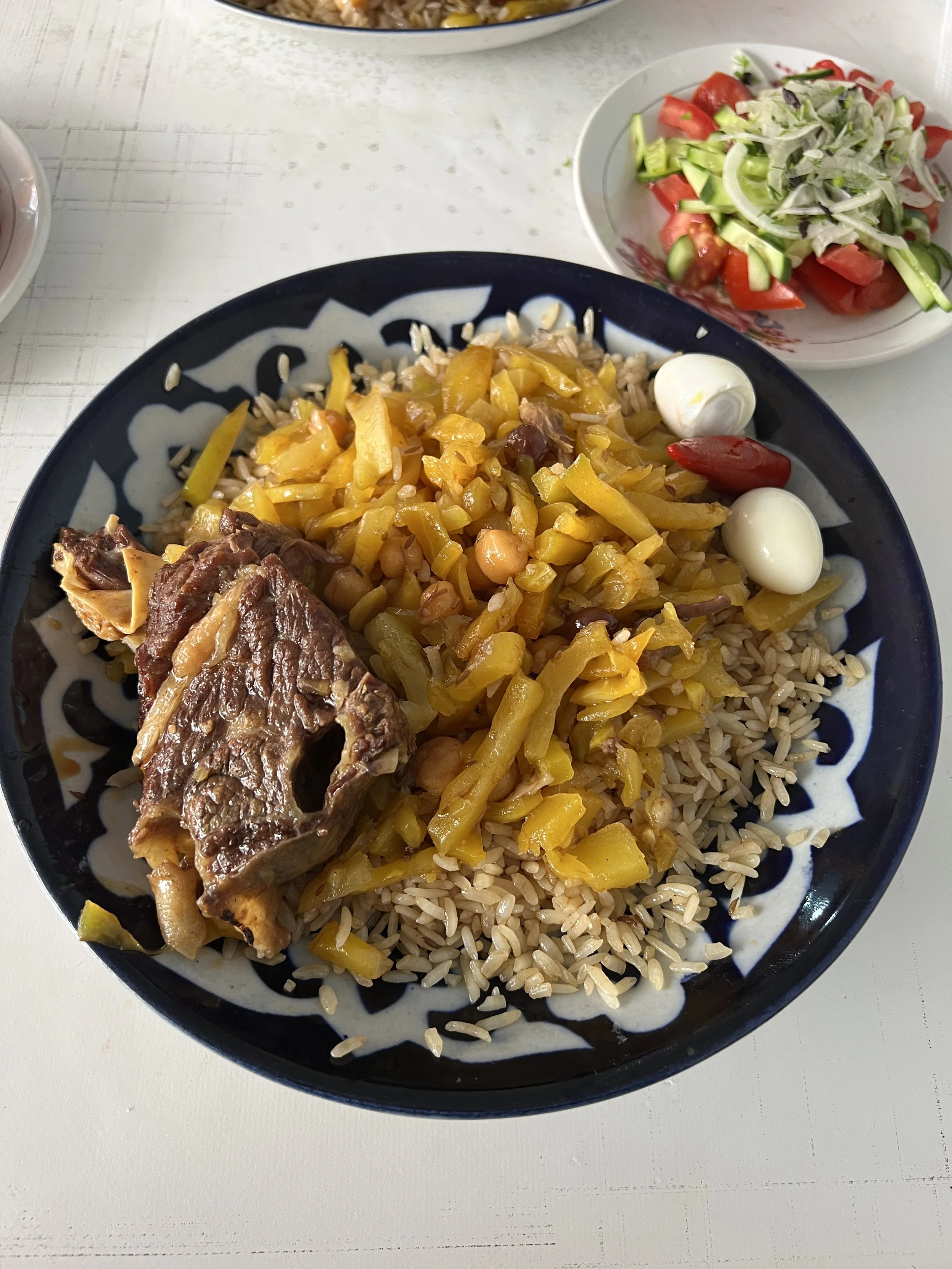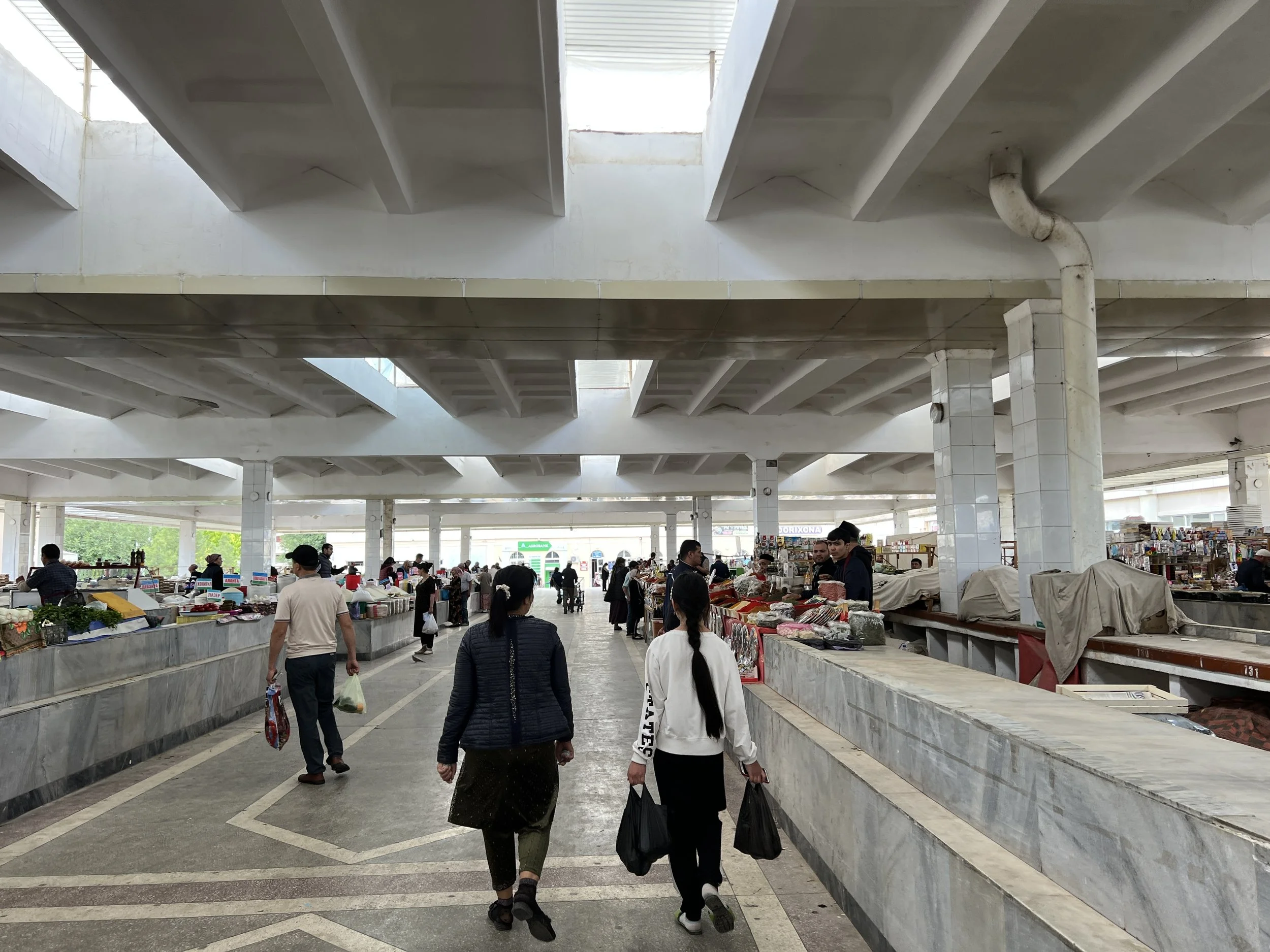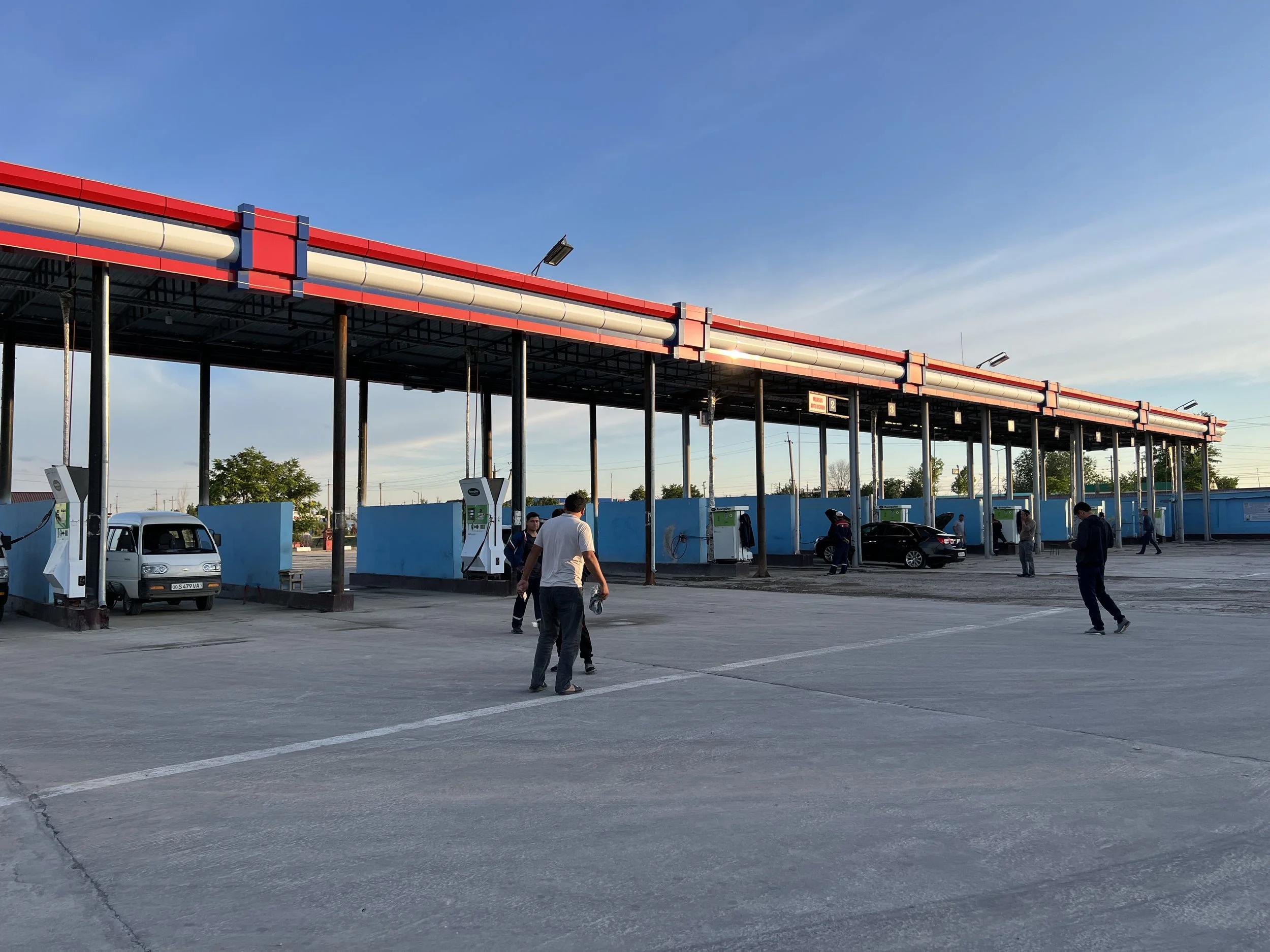Uzbekistan
For years, just hearing the name Uzbekistan conjured up images of the caravans passing through vast deserts on the Silk Road. I’ve always been intrigued by this nation, so in 2019 I convinced my family to go there for my eighteenth birthday. We had made it all the way to Istanbul before my brother got sick. We ended up having to stay longer in Istanbul, and by the time my brother felt a bit better, he wanted to go home, so my Uzbekistan dreams remained unfulfilled. When the nation reopened to tourists, I made it my mission to go as soon as possible, so I set off there in May 2022.
My week in Uzbekistan (O’zbekiston) brought me to Khiva, Tashkent, Samarkand, and Nukus. This article will break down each of the destinations as well as the transport.
Getting to Uzbekistan:
I flew Uzbekistan Airways from Istanbul to Tashkent and connected directly to Urgench. From Urgench, a pre-arranged car from my hotel brought me to Khiva in just under an hour.
Uzbekistan is increasingly well connected with Uzbekistan Airways able to take you directly to Tashkent from New York, Kuala Lumpur, Istanbul, Dubai, other Central Asian cities, and many European hubs. You can also fly on foreign carriers to Seoul, Minsk, Dubai, and many Russian cities.
Some Background:
Tourism to Uzbekistan is still quite new. The country only opened in earnest in 2017 once President Shavkat Mirziyoyev conducted a series of economic reforms. Americans require an e-visa to enter Uzbekistan, whilst Canadians and most Europeans do not require a visa. Most tourists are Russians on extended trips setting up bank accounts. As a result, hotels are quite full, and Airbnb prices are double what they were just 6 months ago.
The non-Russian tourists are primarily older couples from Europe and South Korea on group tours. Independent travel is fully allowed, but just don’t expect to see as many young backpackers as one would in places like Thailand or Nepal.
Because few western independent tourists go to Uzbekistan, taxi drivers and shopkeepers intend to take full advantage of the ones they encounter. Therefore, expect to be quoted $40 for a $5 scarf. Please do not be shy to bargain heavily in markets. For taxis, instead of bickering with the drivers, download Yandex Go— the Russian equivalent of Uber. They bill a fair price in the app— often 1/10 of what the taxi drivers initially ask for— and you can pay via credit card or cash. Sometimes the credit card won’t work, so carry enough cash (in small bills) just in case. One time I paid in a slightly larger bill, and I got fleeced with the minimal amount of change I received. Taxi drivers often carry a huge wad of money but suddenly don’t have any change when you need it.
Also, an English-speaking tour guide should cost about $40 a day. Traveling with one makes for a very pleasant experience, especially since nobody speaks English outside of hotels.
Khiva:
The old walled city of Khiva— Içan Kala— is truly a sight to behold. This walled city houses tall minarets, multiple madrasas (Islamic schools), and handicraft studios. Purchase a ticket outside, and then you can access all of the buildings through a turn stall. Admission is free in the evenings, so you can go to the restaurants and roam the streets. If you are staying inside the city like I was, at the Orient Star Hotel, just let the staff at the entrance know, and you can enter without a ticket at any time (though you won't be able to get into the buildings and museums).
Besides the fascinating architecture and stories of what happened in this city, what impressed me the most about Khiva was its cleanliness. Frankly, this theme extends throughout my entire time in Uzbekistan. Singapore and Dubai are the only other places I can think of as clean as Uzbekistan.
I recommend booking a guide through your hotel to get a sense of the city. I booked one the same day for $40 for 3 hours. She spoke excellent English and told enthralling stories about all the buildings we visited.
There are also some great opportunities for day trips from Khiva. One day I decided to go and visit a few of the old forts (kala). I paid $70 for a guide and driver that took me to two forts over the course of 7 hours. One can also drive from Khiva to Muynaq to see the rusted boats sitting in the desert now that the Aral Sea has receded.
If going by pane, Khiva is accessed via Urgench airport, about an hour away. Alternatively, you can drive from Nukus (3 hours) or Bukhara (6 hours). A taxi from Khiva to Bukhara is $80 in a private car, or you can wait until the taxi is full and pay just $20. A train also runs through, but it can sell out in advance over the summer months.
Samarkand:
Conveniently, Samarkand is connected with Tashkent with a 2 hour high speed train, making a day trip possible. I booked a tour via Tripadvisor that drove me from my hotel to the Tashkent train station and then picked me up at the train station in Samarkand for a full day of sightseeing.
My experience was sub-optimal, frankly. They texted me saying I'd be in a group of 5, so I had to send them a screenshot of the listing saying the listed maximum group size was 2 people and asked for a partial refund. Suddenly, they found me a private guide but never fixed the online listing. The guide was also not great— he would walk with me somewhere, explain something about the site we were at from the outside, and then try to leave me to explore the building on my own. It was particularly crazy how he'd tell me what I would be seeing inside when he could just walk in and show me. I ended up telling him I wanted him to come with me. It took a lot more cajoling than was needed, and after a while, he just said, "no— I will wait outside."
In the future, I would ask your Tashkent hotel to book a guide to meet you at the train station in Samarkand instead of booking an online tour. Make it clear you want the guide accompanying you inside all buildings and that you will not pay if that is not done. I find that being very clear about what you expect and saying you will not pay if the experience does not meet those expectations works well.
Despite the poor tour experience, Samarkand did not disappoint. After getting picked up from the train station, my guide and I headed to the Gur Emir Mausoleum, where the conqueror Timur is buried. He controlled much of Central Asia and all the way out to modern-day Turkiye and southern Pakistan.
Next up was why I first wanted to come to Uzbekistan: the Registan. This public square is surrounded by three Madrasas (Islamic schools). It's a commanding space that used to be used for all sorts of public events. I visited on a Sunday, which meant loads of Uzbeks from surrounding cities were there for sightseeing. If you want less crowded views (and pictures), go on a weekday. You don't need me to say it, but this place was breathtaking.
For lunch, we stopped for some plov, Uzbekistan's national dish. It consists of beef, rice, carrots, and often quail eggs. Each city has its twist on it, and in Samarkand, the ingredients are not mixed together. An ethnically Iranian family that has been living in Samarkand for centuries runs the place, and when they found out we share common ancestry, they let me take some pictures of their cooking process. This is just about the best meal I've ever had, and I learned the meat is so flavorful because it's slaughtered fresh and not refrigerated.
Afterward, we went to Bibi-Khanum Mosque. My understanding is that the mosque was never fully finished, but the courtyard makes it a very peaceful place to spend some time.
Next, we saw a piece of the Soviet legacy: the Siab Bazaar. Of course, Bazaars had existed in Samarkand long before the Soviets even existed, but this marbled-floor outdoor market reminds you of the regime that was here just over 30 years ago.
The last highlight of the day was the Shah-i-Zinda (The Living King) Necropolis. After summitting a few flights of stairs, you are rewarded with sweeping views of the hills outside Samarkand behind you. Right in front lies a small alley lined with smaller mausoleums honoring some of the great men of Samarkand. The concentration of blue tiles is some of the highest I've ever seen. I must not have been the only one mesmerized by the colors because I saw lots of people posing in front of the mausoleums.
This was one of the sites where the guide flat-out refused to walk with me inside, and when I was done, he left me waiting for another 20 minutes while he was talking with a friend of his. Do not book tours from Salom Travel Service.
While waiting for the car to take me back to Tashkent (the train was sold out), we stopped at the Ulugh Beg Observatory. It was here that astronomer Ulugh Beg calculated the length of the year and tilt of the Earth's access with striking accuracy in the early 1400s.
The ride back to Tashkent was a pleasant 3 hour drive through some lovely scenery. As with everywhere else in Uzbekistan, when we put gas in the car (most cars here use natural gas because it is so cheap), I had to get out of the car. Supposedly, there's some risk of the gas tanks exploding during the filling process. There are also concrete barriers between pumps, likely to shield other cars from a hypothetical explosion.
Nukus, Karakalpakstan
Unknown to much of the world, the western part of Uzbekistan, about 40% of the nation’s land, is actually a semiautonomous region known as Karakalpakstan. This arid part of the country is well known for containing the now-receded Aral Sea. Under the Soviet Union and during much of its independence, Uzbekistan has drained the Aral Sea to irrigate cotton farms. This has caused the sea to shrink so much that rusted boats one in the water lie in the desert, hours from any water. The best place to see these boats is in Muynaq, a 3 hour drive from the capital of Karakalpakstan, Nukus. It’s also possible to make a long day trip from Khiva.
I booked a tour via Hotel Jipek Joli. I reached out on WhatsApp, and the friendly agent booked an airport pickup, hotel ($45), and guide + driver up to Muynaq ($120) for me.
It was a pretty straightforward tour. I took an early morning Yandex from the Hyatt Regency in Tashkent to the domestic airport terminal and took the 90 minute flight to Nukus. On arrival, I was taken to the hotel and waited about 15 minutes for my guide, who would join the driver and me to Muynaq. We first stopped at the Nukus Necropolis, where people are buried above ground due to the groundwater. I’ve never seen so many graves in one place, so this was an eerie sight.
Afterward, we headed up to Muynaq. Here, we stopped at the museum, where they showed pictures of what the fishing town of Muynaq used to look like and the wildlife that used to live there. There’s also a film about how Muynaq has changed over the years. From there, we went down a hill to see the boats.
We then headed to lunch at the home of an older woman who makes lunch for tourists in the area. It was pretty good, with a healthy serving of Uzbek dumplings or manti.
After the drive back, I walked around downtown Nukus for a bit. It’s a cute little city, and there was even a small carnival outside the main museum. I can whole-heartedly recommend Hotel Jipek Joli too— the rooms were very clean and had excellent air conditioning. Much of the staff also spoke English, which is not a given in these smaller hotels.
The following morning, I flew back to Tashkent.
Tashkent (Toshkent):
In most of Uzbekistan, people speak Uzbek, a Central Asian language, like Turkish. In honor of the Soviet past, however, Russian is the most common language in advertisements and conversations in Tashkent. The city is also home to many ethnic Russians who have now become Uzbek citizens after the dissolution of the Soviet Union. This might change, though, since President Mirziyoyev is actively trying to make Uzbek more widely spoken in the Uzbek government.
Most of Uzbekistan did not feel like being in the former Soviet Union, unlike a place like Transnistria. The exception to this is Tashkent. While the city has many modern buildings, it is also home to Hotel Uzbekistan (the only place foreigners could stay during the time of the USSR), a Soviet Metro system, and an indoor market.
One of my favorite stops of the day was at a restaurant called Shavkat Osh, where they serve traditional Tashkent plov. What differentiates Tashkent plov from Samarkand plov is that the rice, beef, and vegetables are mixed, and horse meat + garlic cloves are served on top.
Conclusion:
Visiting Uzbekistan was a dream come true, and boy did it not disappoint. There’s something very special being in a place with history that stems back thousands of years. I’ll certainly be back. I’d like to visit Bukhara next, which is the “Persian City.” I’ve also heard good things about the Fergana Valley where people are much more religious and the scenery more mountainous.
Uzbekistan is UN Country 60/193 for me.

































